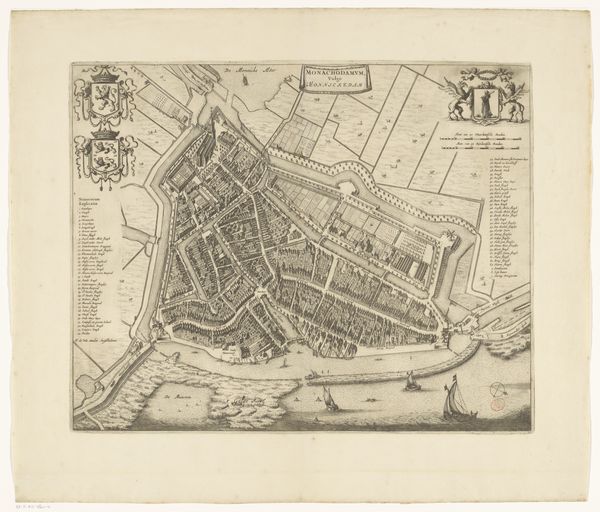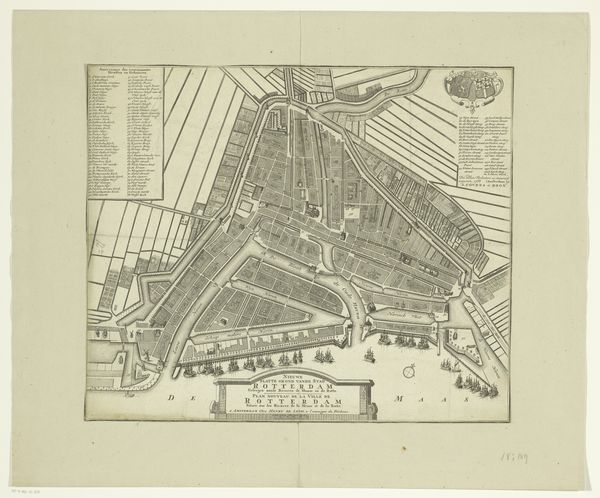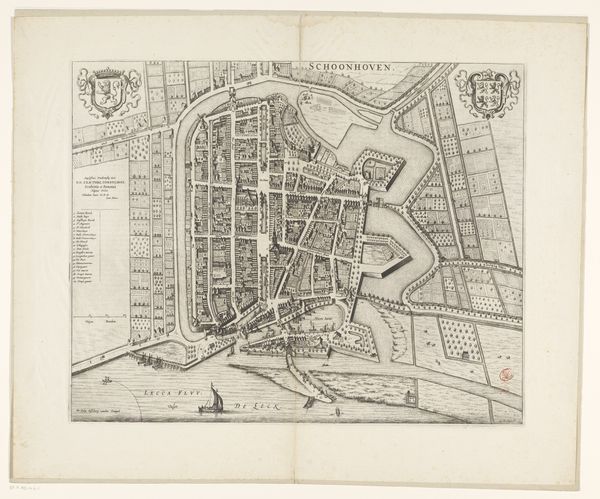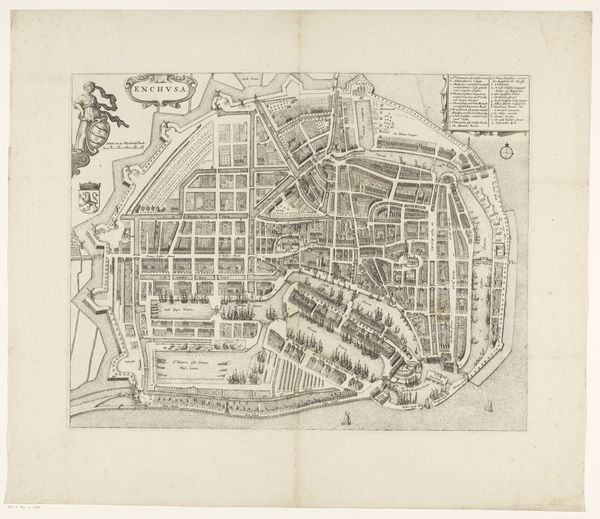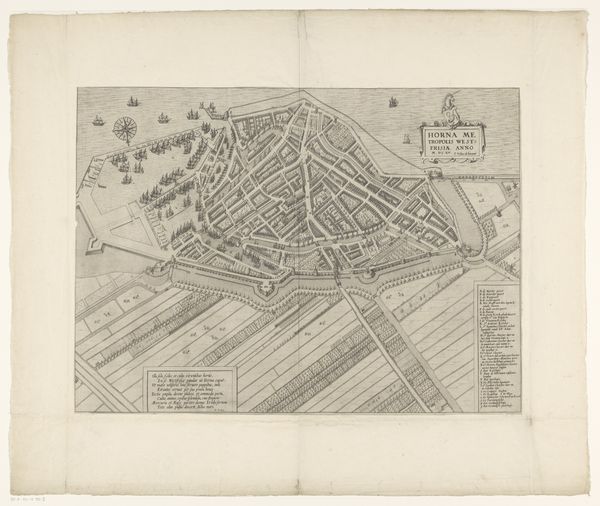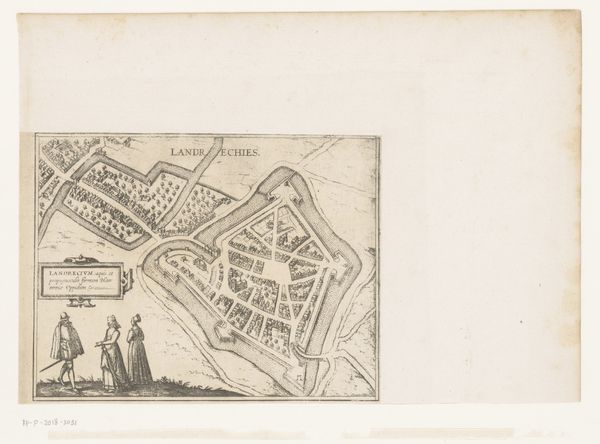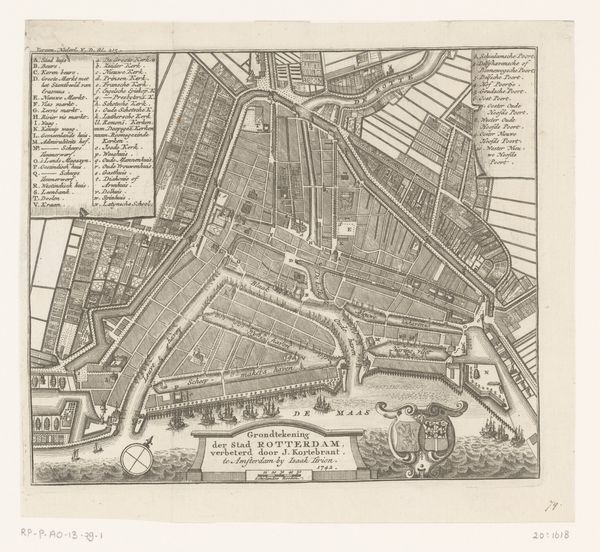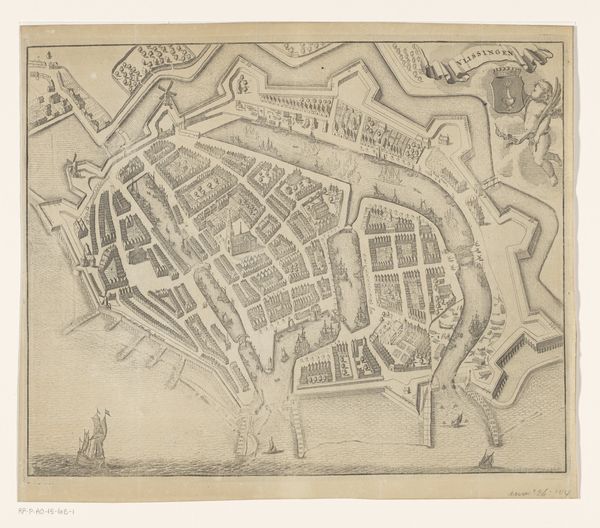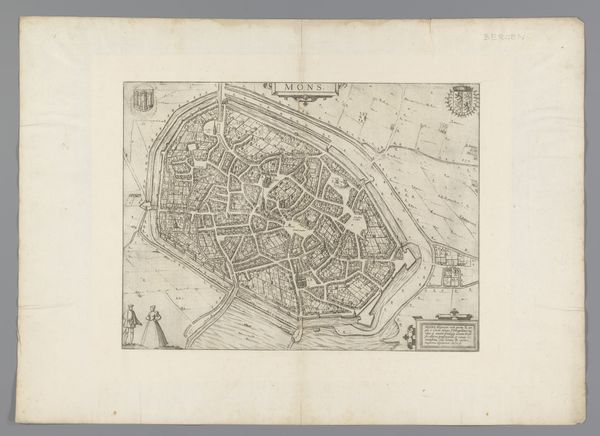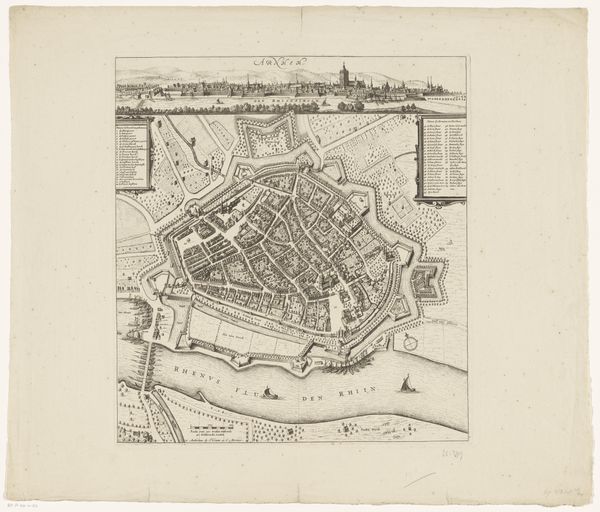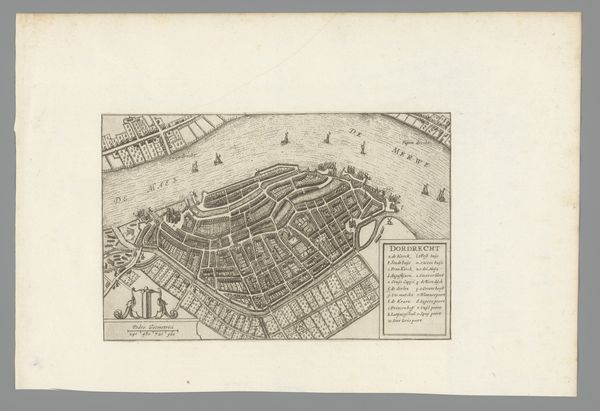
print, etching
#
narrative-art
#
dutch-golden-age
# print
#
etching
#
landscape
#
geometric
#
cityscape
Dimensions: height 400 mm, width 504 mm
Copyright: Rijks Museum: Open Domain
Curator: Looking at this etching from the Dutch Golden Age, "Plattegrond van Rotterdam," made between approximately 1657 and 1728 by an anonymous artist, I immediately think of the weight a map carries—it's more than geography. It's history, identity, aspiration all etched into one image. Editor: It's strikingly precise! The rendering of buildings and waterways almost feels scientific. The material used – the paper, the etching lines – feel almost incidental, just vehicles for capturing an ideal urban form. How might a person use a print like this? Curator: A map like this offers a way to understand your place in the world, literally. It evokes pride, particularly because maps also represented power, knowledge and possession. Even its geometric patterns speak to something deep – a collective vision of order. It is like seeing one's place in a puzzle, which connects to a grander narrative of the city's life. Notice the carefully rendered ships; those aren't just decoration! Editor: You're right about those ships. To my eyes, the lines of production are so direct! Each ship represents countless hours of labor to bring resources or manufactured goods to Rotterdam’s residents. Did you note how the walled and moated areas contrast the tightly packed city? Curator: Precisely! The geometric, cultivated plots hint at human dominion over nature. Even the coat of arms hovering at the upper corners of the scene suggest protection, belonging. Everything reinforces that feeling of civic identity being crafted. It evokes cultural memory – of struggles, ambitions, and collective spirit. Editor: It’s almost eerie to imagine how such linear design represents very dirty work, but it shows that even art objects participate in broader patterns of material reality. But on a formal level I also keep returning to the medium: how would different stages of life treat the print differently as it wore down? It shows a fascinating and complex layering of time, design, process, and identity. Curator: Exactly! This wasn't a spontaneous rendering. The act of mapping, even in an anonymous form, tells its own complex narrative of how the city has developed. That, I think, reveals itself to us as we look deeper. Editor: Absolutely! This meticulous etching is ultimately grounded in raw materials, economic forces, and the hands that shaped Rotterdam's landscape. Fascinating indeed.
Comments
No comments
Be the first to comment and join the conversation on the ultimate creative platform.
